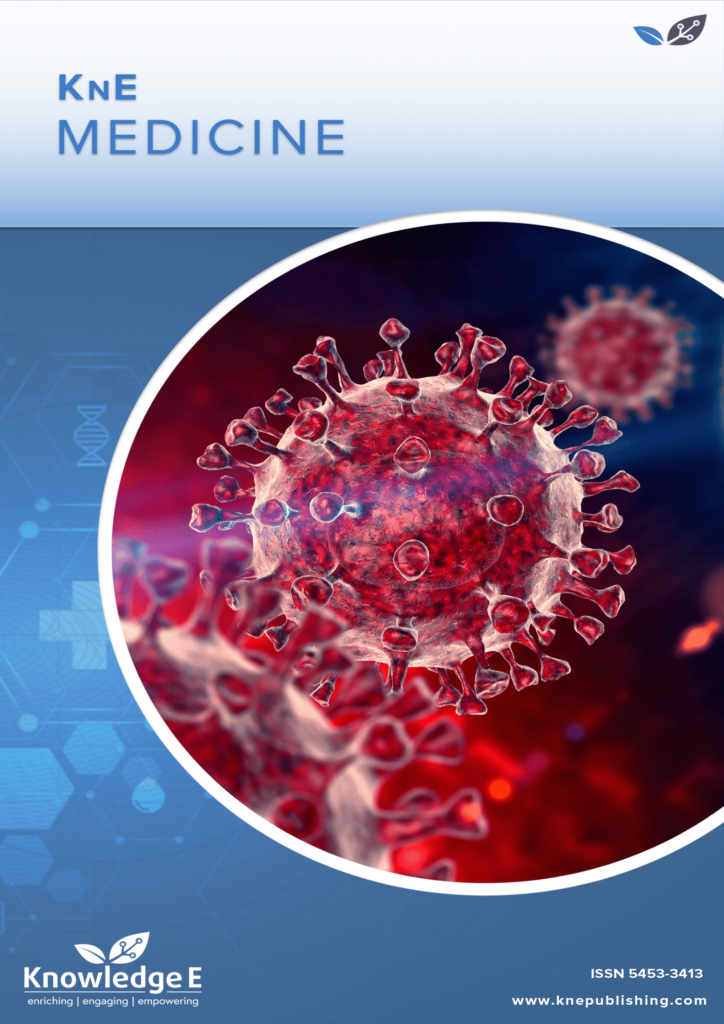
KnE Medicine
ISSN: 2519-125X
The latest conference proceedings on all fields of medicine.
Relationship Between Daily Caffeine Intake and Menstrual Cycles in Young Adult Women
Published date: Sep 15 2022
Journal Title: KnE Medicine
Issue title: The International Conference of Medicine and Health (ICMEDH)
Pages: 316–323
Authors:
Abstract:
Caffeine consumption is part of the lifestyle of students and adults. More than 80% of the world’s population consumes caffeine every day. In Indonesia, caffeine consumption nationally increases by 20% per year. The behavioral factor of consuming excessive caffeine in women can induce obesity symptoms, premenstrual syndrome miscarriage, and increased risk of bone density loss. This cross-sectional study was conducted from October 2020 to January 2021 to identify the relationship between caffeine intake and the menstrual cycle in young adult women. The researchers administered a questionnaire about the menstrual cycle and daily caffeine intake to 107 female nursing students from the University of Muhammadiyah Malang who met the inclusion criteria. More than 70% of respondents were between 19-21 years old; more than half of them often consumed caffeine; and 73 respondents had normal menstrual cycles. The Spearman correlation test results showed that there was no relationship between caffeine consumption and menstrual cycles in the young adult women (p = 0.717).
Keywords: caffeine, menstrual cycle, nursing students, young adult women
References:
[1] A. Yonata and D.G.P. Saragih, “Pengaruh Konsumsi Kafein pada Sistem Kardiovaskular.,” Jurnal Majority. vol. 5, no. 3, pp. 43–49, 2016.
[2] A. Kusumawati and I. Finurina, “The Effect of Caffein Consumption Frequency to Pre-Menstruation Syndrome on.,” vol. XIII, no. 2, pp. 7–10, 2016.
[3] J. Depaula and A. Farah, “Caffeine consumption through coffee: Content in the beverage, metabolism, health benefits and risks.,” Beverages. vol. 5, no. 2, p. 2019.
[4] I. Zarwinda and D. Sartika, “Pengaruh Suhu Dan Waktu Ekstraksi Terhadap Kafein Dalam Kopi.,” Lantanida Journal. vol. 6, no. 2, p. 180, 2019.
[5] A.M. Graczyk, A.M. Ziegler, A. Bendlin, T. Sion, K. Vattana, and J.L. Temple, “Effects of Caffeine Administration on Reaction Time, Attention, and Inhibitory Control in Children and Adolescents.,” Journal of Cognitive Enhancement. vol. 2, no. 3, pp. 276–286, 2018.
[6] Supatmi, A. Yusliana, Y. W, and F. LY, “Hubungan Durasi Tidur Dengan Siklus
Menstruasi Pada Mahasiswi Keperawatan Universitas Muhammadiyah Surabaya., Sinar Jurnal Kebidanan. vol. 01, pp. 14–20, 2019.
[7] Ninla Elmawati Falabiba, “No Title No Title No Title.,” vol. 9, no. 1, pp. 18–27, 2019.
[8] Y. Lim, Y. Park, S.K. Choi, S. Ahn, and J.H. Ohn, “The effect of coffee consumption on the prevalence of diabetes mellitus: The 2012–2016 Korea national health and nutrition examination survey.,” Nutrients. vol. 11, no. 10, p. 2019.
[9] M.E. Patrick, I.C. Rhew, J.C. Duckworth, M.A. Lewis, D.A. Abdallah, and C.M. Lee, “Patterns of Young Adult Social Roles Transitions Across 24 Months and Subsequent Substance Use and Mental Health.,” Journal of Youth and Adolescence. vol. 49, no. 4, pp. 869–880, 2020.
[10] O. Best and S. Ban, “Adolescence: physical changes and Neurological Development.,” no. September 2020, pp. 272–275, 2021.
[11] I. Aryani, U.P. Rachma, E. Rokhayati, and A.G. Moelyo, “Menstrual cycle patterns of Indonesian adolescents.,” Paediatrica Indonesiana. vol. 58, no. 3, pp. 101–5, 2018.
[12] M.U.K. Dewi, D.N. Mustika, and E. Kusumawati, “Penyuluhan Tentang Asi Eksklusif , Vitamin a , Dan Stunting Di Posyandu Anggrek Rw 04 Dusun Teseh Kelurahan Meteseh Kecamatan Tembalang Kota Semarang Counseling of Exclusive Breastfeeding , Vitamin a , and Stunting in Posyandu Anggrek Rw 04 Dusun Teseh Ke.,” Jurnal Pengabdian Masyarakat Kebidanan. vol. 2, no. 2, pp. 50–55, 2020.